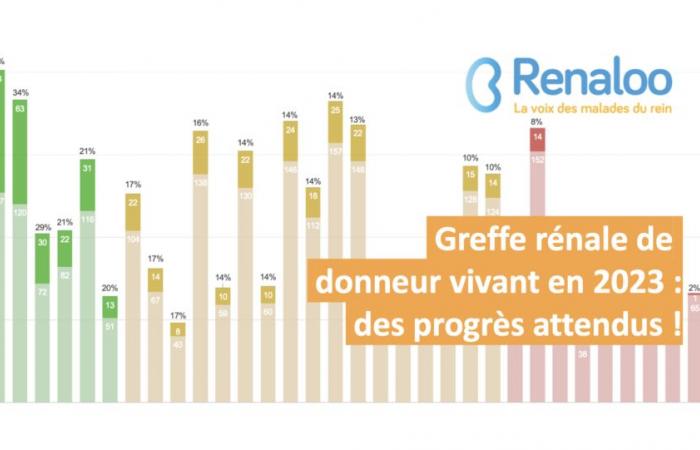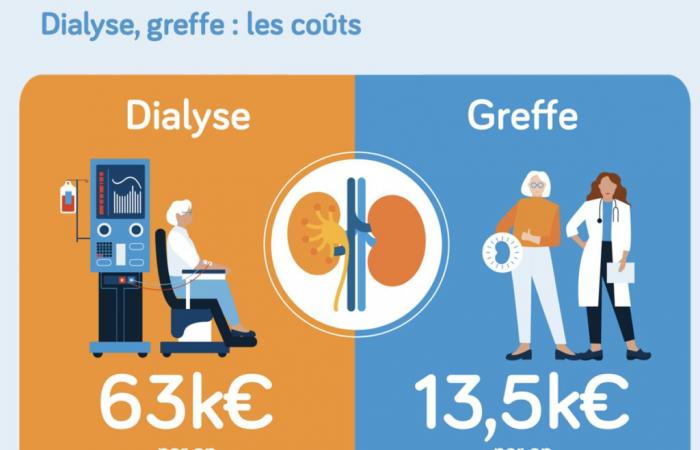Kidney transplants from living donors are those that work best and last the longest, thanks to the quality of the grafts collected. The publication of the 2023 annual report of the Biomedicine Agency gives us the opportunity to take stock of this activity, the development of which is considered a priority by the transplant plan.
- 557 living donor (LD) kidney transplants were performed in France in 2023.
- This represents an increase of 43 transplants compared to 2022, but still far from the record of 611 DV transplants carried out in 2017.
Despite their advantages, These transplants only represent 15.8% of the total kidney transplants in France, without progress for several years. Several neighboring countries are doing much better: 27% in the United Kingdom, more than 40% in Norway and Sweden, 50% in the Netherlands.
- If the 2022-2026 transplant plan sets a target of 20% DV for the 45 transplant teams authorized in France, only 6 teams reach (and even exceed) this objective in 2023 (compared to 7 in 2022).
- 2 teams (Marseille and Saint-Etienne) are included in this list, while 3 “drop out” (Reims, Foch and Montpellier), often due to a lack of human resources.
- More worryingly, 8 teams will perform fewer than 5 DV transplants in 2023, which may raise questions about the quality and safety of care, particularly for donors.
In the context of the hospital crisis, the main obstacles to this activity are:
- the difficulty for free up the 2 operating theatres and the necessary personnel
- Insufficient valuation of this activity, hence a low attractiveness for medical-surgical teams
- The dedicated human resources required for thedonor support before and after donation.
The monitoring of living donors, although mandatory, is often imperfect, as highlighted in the report from the Biomedicine Agency.
Transplantation from living donors should not be the adjustment variable in the face of the difficulties encountered.
On the contrary, it should be encouraged, above all in the interests of recipients, but also of public finances, because of the savings it generates by reducing the need for dialysis.







